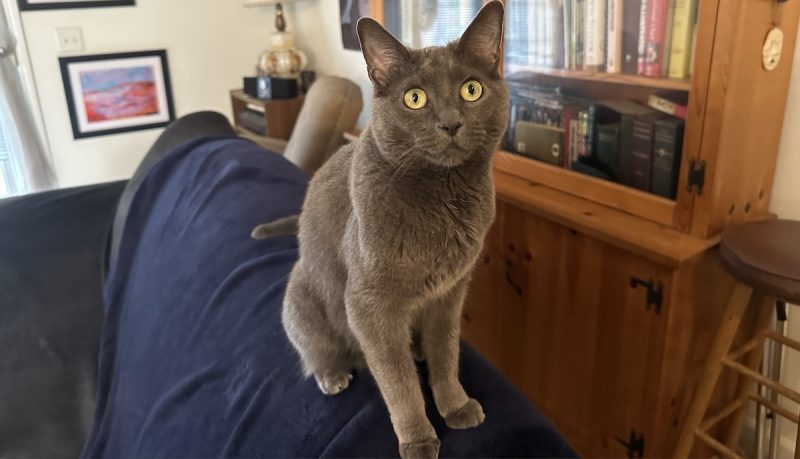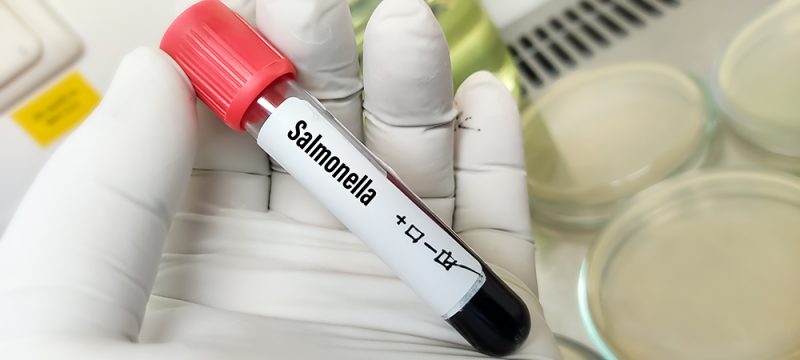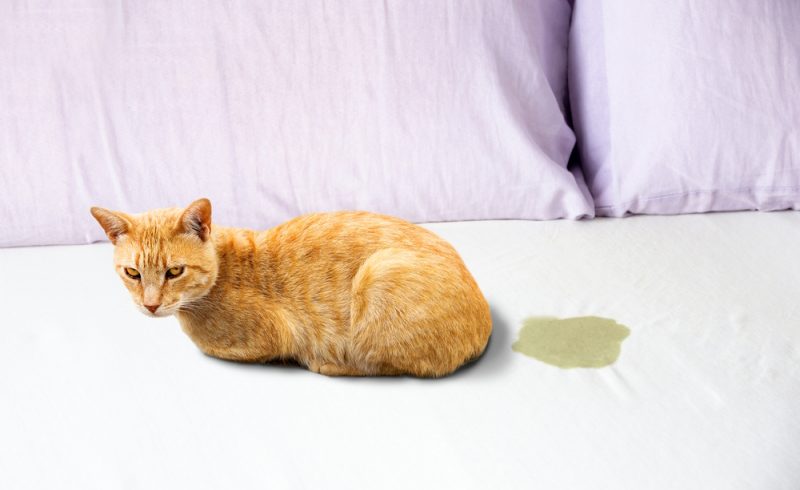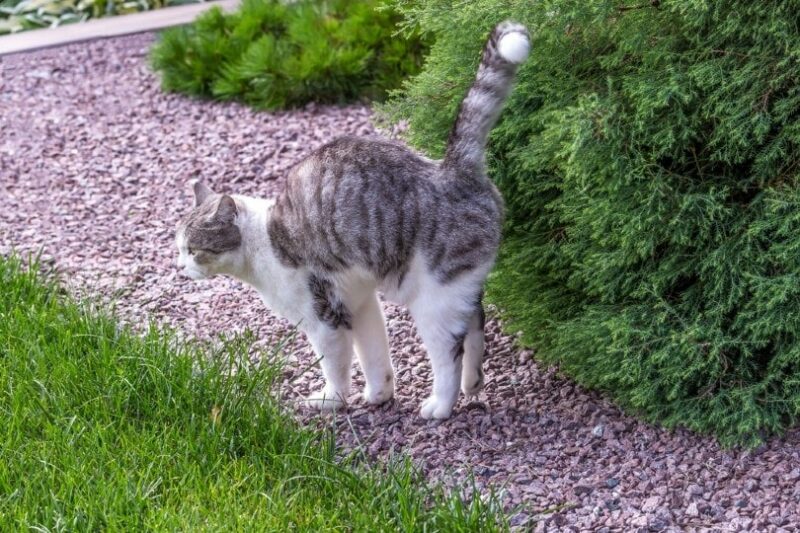Skin bumps and growths in cats are not as common as in dogs, but they do occur often enough to warrant knowing a bit more about them. A tumor is defined as an unwanted growth. Some people automatically consider this to mean cancer, but a tumor can be made of non-cancerous cells as well, such as fat.

What Is a Histiocytoma?
A histiocytoma is a growth that occurs in the layers of the skin. They can occur anywhere on the body: legs, neck, head, or trunk. Generally, they are not painful and grow as single or solitary masses. They often look or feel like a lump (often hairless) that is growing on your cat’s skin.
They come from a type of cell called a histiocyte, which normally functions as part of the immune system. In cats, solitary histiocytomas are generally not thought to cause cats to feel unwell or to cause other clinical signs. As such, they are considered benign growths. Because they can start very small, they might be difficult to detect in the early stages of growth. Most of the time, they look like hairless lumps or bumps, but they don’t tend to bleed, smell, or cause a cat to react if you touch them.
Histiocytomas can occur in any species, not just cats. They are not considered one of the more common skin growths that cats can experience. There is no specific breed of cat that is more prone to developing histiocytomas, although, in general, older cats are more likely to develop skin growths than younger ones.

What Are the Causes of Histiocytomas?
The skin contains a variety of different cell types. Some form layers of the skin, others construct blood vessels and capillaries, and others provide structural support to the area. The immune system also has cells within the skin, and one type is called a histiocyte.
Because growths are often named after the type of cell they are caused by, a mass formed by histiocytes is considered a histiocytoma. It’s not entirely sure what causes these cells to turn into a mass, though many other skin masses in cats and other species are known to arise from distinct genetic mutations—so it is possible that genetics may play a role in their development.
Ultimately, not much is known about what causes histiocytomas to form in cats. Unlike other growths or diseases of cat skin, there aren’t known factors that predispose these to occur, such as sun exposure or trauma to the skin.

Where Are the Signs of Histiocytomas?
Think of a histiocytoma as a skin lump. Basically, they start small, often only a millimeter or so in size, and they tend to get slightly larger with time—often approaching a centimeter or two in size. They arise from cells within the skin, so they visually tend to look like a distinct lump, bump, or mass.
You may first notice a bump in the skin while petting your cat, or you may notice that an area of their haircoat is distorted or appears to have less hair.
Histiocytomas don’t tend to make cats feel sick—so typical signs of illness, such as not eating, sleeping excessively, vomiting, or having diarrhea, are not expected with a histiocytoma. Similarly, clinical signs of skin issues such as excessive licking, itching, hairloss, or change in haircoat texture or color also generally aren’t seen in cats with histiocytomas.
If your pet is showing these signs, we suggest you speak to a vet.
If you need to speak with a vet but can't get to one, head over to PangoVet. It's an online service where you can talk to a vet online and get the advice you need for your pet — all at an affordable price!

What Are the Potential Dangers of Histiocytomas?
Generally, histiocytomas are not thought to be dangerous. It is possible that if one is scratched or traumatized, the surface may be more prone to bleeding. Unlike other types of masses and growths in cats, these don’t tend to spread to other parts of the body (such as internal organs). They are also not contagious—so touching one won’t cause another cat or person in the house to get it.
Surgical removal is often a recommended treatment for skin bumps in cats—even ones that aren’t dangerous. This is for a few reasons. First, if a growth gets too large, it can hamper movement, walking, or lying down. So it is often better to remove bumps before that happens. Similarly, it is a much easier surgery if the mass is small compared to if it becomes larger.

Frequently Asked Questions (FAQs)
If I Find What Might Be a Histiocytoma On My Cat, What Should I Do?
Ideally, put your finger over the suspected histiocytoma and take a photo showing where on your cat it is. This is often one of the hardest things for vets—to find small skin bumps that were found at home and seemingly disappear by the time the cat arrives at the vet! Having a photo showing the general area can be very helpful!
How Are Histiocytomas Diagnosed?
A vet will either take a small sample with a needle, called a “fine needle aspirate”, or a biopsy. Alternatively, they may simply remove the mass and then send the sample for a pathologist to look at.
What Is the Treatment?
There are two treatment options: to monitor the histiocytoma or to have it surgically removed.

What Does Monitoring Involve?
Monitoring involves a visual inspection of the mass at least a few times a week. Having a quick feel to ensure it hasn’t changed in size or shape or gotten noticeably larger is an important thing to check for. You also don’t want a sudden change in color or odor. And, if it starts to bother your cat, that would be another concern!
What Does Having a Histiocytoma Surgically Removed Involve?
Surgical removal means that a small procedure called “mass removal” is performed. This is generally performed under general anesthesia, and involves removing the mass and any surrounding tissue it was growing in. Most of the procedures take less time than a typical spay, and generally, cats go home the same day as the procedure. Recovery may involve a few sutures, to be removed at a later date, but most cats feel back to normal very quickly afterward!
Can You Prevent Histiocytomas in Cats?
Unfortunately, not that we know of.
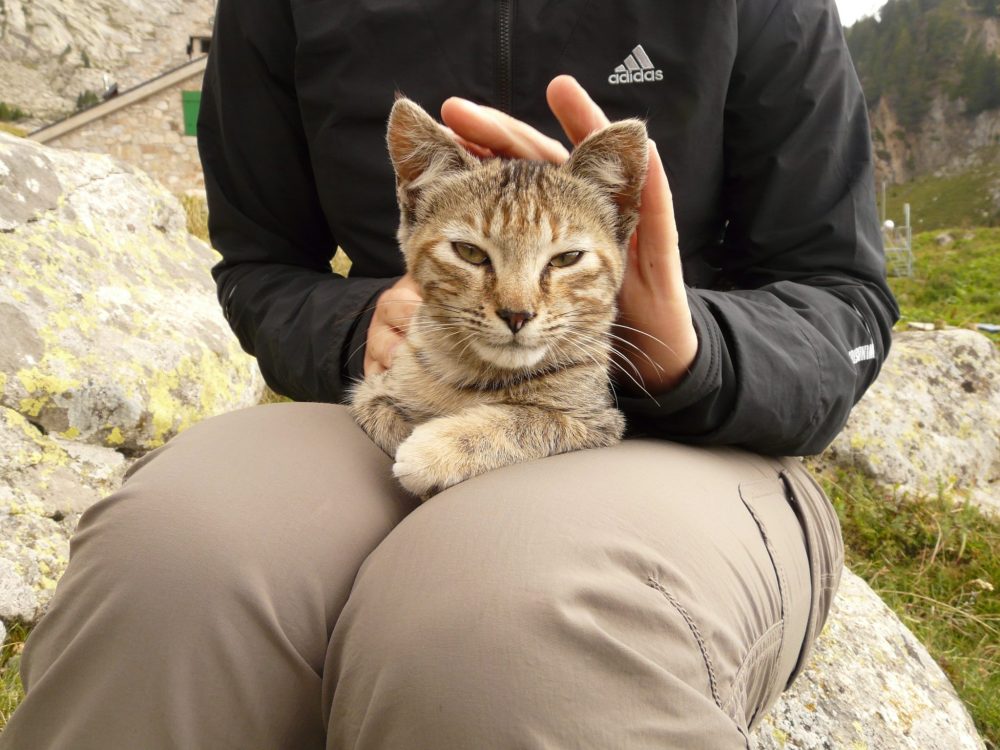

Conclusion
While histiocytomas in cats are definitely not one of the more commonly diagnosed masses, they are worth knowing about. They also highlight the importance of doing regular checks of your cat to feel for any changes in their skin because finding changes early often makes treatment much easier! Skin masses also highlight the importance of annual veterinary checks to help find anything unusual on your cat.
Featured Image Credit: RJ22, Shutterstock



